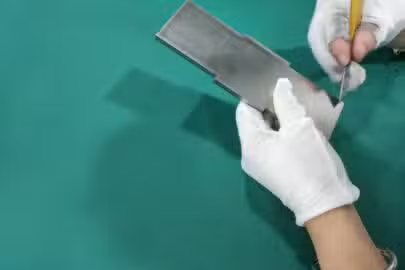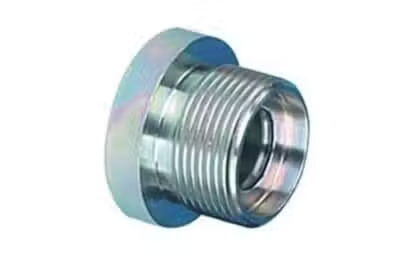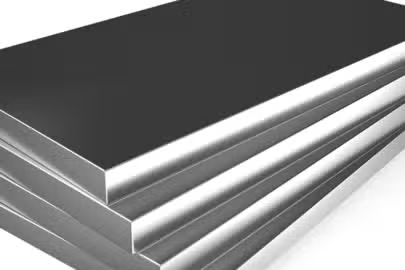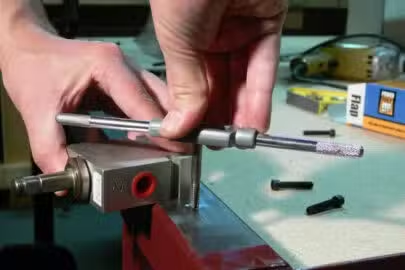Metallurgical operations like cutting and welding that involve metals often generate heat. Whenever a metal is heated, its structure and properties are altered, enabling the fabrication of such metal into different shapes.
Heat treatment of metals involves heating the metal and then cooling it to prevent it from getting to its molten state. This procedure helps to manipulate the metal’s mechanical properties. Metal workers often use heat treatment to increase metal’s strength or malleability, abrasion resistance, or flexibility.
Let’s look at the heat treatment process, diving into the various techniques available and tips that will ensure top-quality results.
What Is Heat Treatment of Metals?
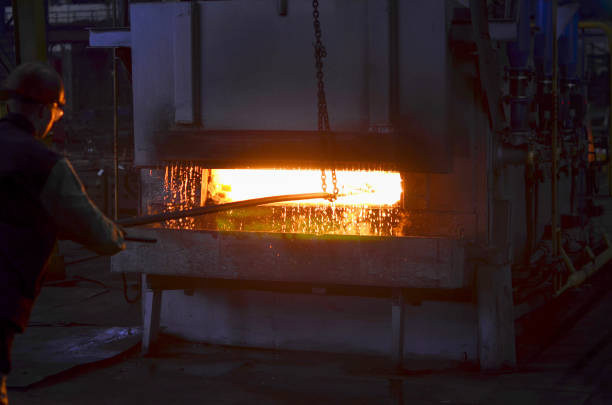
Heat treating refers to any procedure in which the physical properties of a substance (such as metal) are altered through heat application. This procedure often enhances the metal’s properties, performance, and durability.
Heat treatment consists, in its most fundamental form, of heating the metal, maintaining it at that temperature, and then rapidly cooling it. Throughout the procedure, the metal’s mechanical properties will change. This is because the elevated temperature alters the metal’smetal’s microstructure. Microstructure is a significant factor that influences the mechanical characteristics of a given material.
The final result depends on many factors. These include the cooling rate, environmental conditions, the duration of heating and maintaining a specific temperature for the metal component, etc. These parameters depend on the heat treatment method, the metal involved, and part dimensions.
How Does Heat Treatment Work?
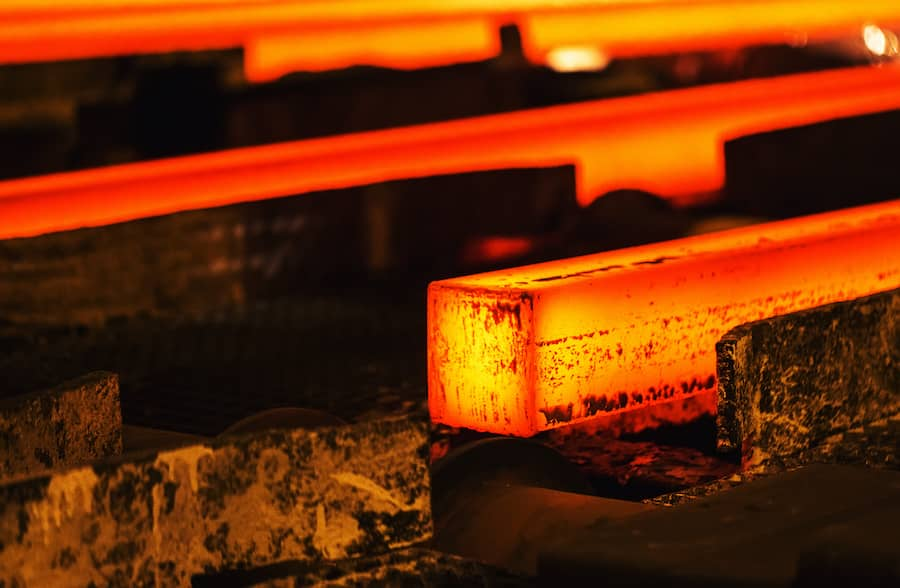
Generally, heat treatment works in three main stages:
- Slowly heating the metal to ensure that the metal maintains a consistent temperature.
- Soaking or holding the metal at a designated temperature for an assigned period.
- Cooling of the metal at room temperature.
Heating Stage
Ensuring that metal undergoes uniform heating is the primary objective during the heating phase. Steady heating results in uniform heating. Uneven heating of the metal may cause one portion to expand more rapidly than the other. As a result, a segment of the metal becomes deformed or fractured. The following considerations must guide the selection of the heating rate:
- The thermal conductivity: Metals with a thermal conductivity conduct heat more rapidly than those with a low conductivity.
- Condition of the metal: Components that have undergone prior hardening or duress should be heated at a reduced rate compared to those that have not experienced such processes.
- Size and cross-section of the metal: More significant components can be heated at a slower rate than smaller components. Failure to do so may result in excessive cracks or warping.
Soaking Stage
The soaking period refers to the duration during which the metal is maintained at the ideal temperature. This phase ensures the metal remains at the proper temperature while the intended internal structure develops. Chemical analysis and metal properties are required to ascertain the appropriate duration. In the case of uneven cross sections, the soaking period can be established using the most significant section.
It is not advisable to rapidly increase the metal’s temperature from ambient to soaking temperature in a single operation. On the contrary, it is necessary to gradually raise the temperature of the metal to a level just below the temperature at which a structural change occurs. Then, subsequently, maintain this temperature uniformity throughout the metal.
Cooling Stage
The metal grade must be cooled to room temperature in this stage. The method of cooling metal varies depending on its specific nature. A cooling medium (liquid, gas, or a combination thereof) may be required for the metal. The cooling rate is dependent on both the metal and the cooling medium.
The metal is quenched when cooled swiftly in air, water, brine, oil, or other media. Not all metals ought to be satisfied, as the process may induce cracking or warping in certain metals. Water or brine can swiftly cool metal, whereas oil mixtures are more suitable for a slower cooling process. Water is generally employed to harden carbon steels, oil is used for alloy steel hardening, and water is utilized to quench nonferrous metals. Nevertheless, the cooling rate and medium selected must be suitable for the metal.
Benefits of Heat Treatment of Metals

By altering the properties of metals through heat treatment, they can be used in various metal manufacturing processes. The following are several advantages of heat treatment for metals:
Enhances Machinability and Workability
Heat treatment enhances manufacturability through the elimination of internal stresses. For instance, to reduce the hardness of a difficult metal to machine or deform, it can be annealed or subjected to stress relief. Only a portion of a component can be softened by induction flame heat treatment, leaving the remainder unaffected.
Increases Durability and Resistance to Wear
Using the hardening procedure, heat treatment can increase the wear resistance of a component. Surface or total metal hardening can increase their strength, toughness, durability, and resistance to attrition.
Increases Resilience and Strength
There is a trade-off between toughness and strength; increasing the strength may reduce toughness, leading to brittleness. Tensile strength, yield strength, and fracture resilience can be altered by heat treatment. Although case hardening enhances stability, it requires tempering to reduce brittleness. The material’s intended ultimate strength dictates the exact degree of tempering.
Enhances Magnetic and Electrical Properties
The majority of materials acquire magnetism upon work hardening. A particular annealing procedure reduces the magnetic permeability, which is m critical if the component is used in an electronic environment and several industries.
What Metals Are Suitable for Heat Treatment?
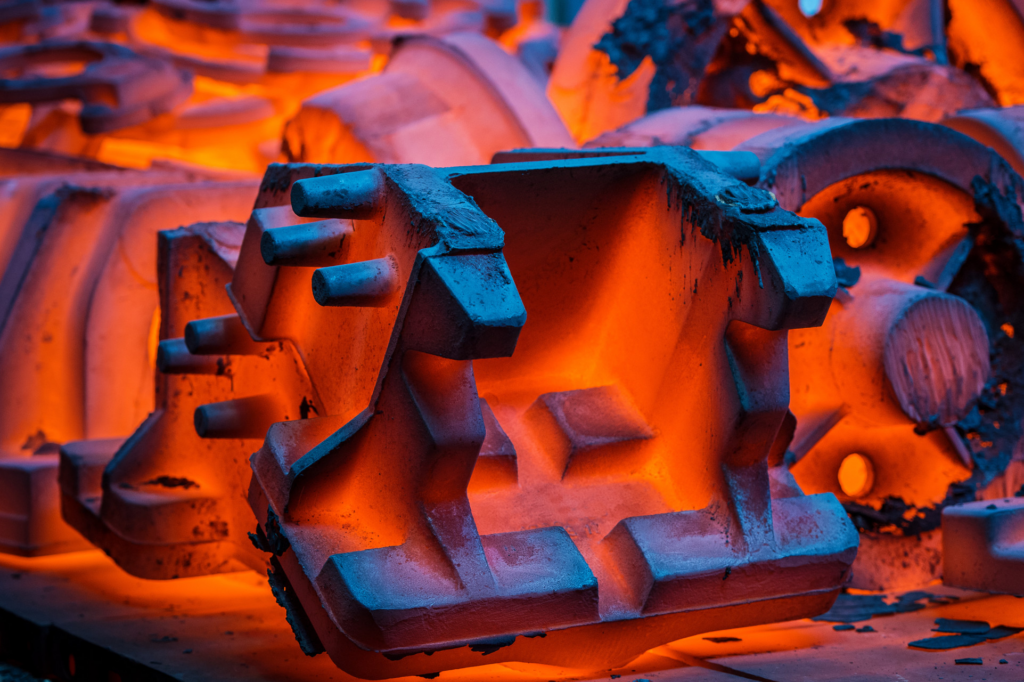
While metal heat treatment predominantly affects ferrous metals, it is also possible to process alloys composed of aluminium, copper, brass, and titanium. Among the ferrous metals amenable to thermal treatment are tool steel, stainless steel, and cast iron in various grades.
- Case hardening, nitriding, tempering, hardening, annealing, normalizing, and stress relieving are typical treatments for ferrous metals.
- Copper and copper alloys undergo annealing, quenching, and other heat treatment processes.
- Annealing, solution heat treating, natural and artificial ageing, and other heat treatment techniques are all viable options for aluminium.
Not every material is amenable to the various forms of heat treatment. Likewise, not all methods will necessarily yield significant benefits for a single material. To obtain the desired outcome, the materials must be examined individually.
Various Types of Heat Treatment Techniques
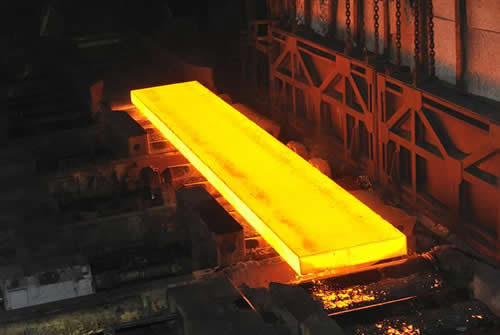
There are various heat treatment techniques to improve the mechanical properties of metals. These different methods are explained below:
Hardening
The hardening process is a widely used heat treatment method to enhance the hardness of metals. In certain instances, only the surface of the metal is hardened. To achieve hardening, the workpiece is heated to a specific temperature, typically between 800 and 900°C. It is then rapidly cooled by quenching in a cooling medium such as oil, brine, polymers, or water.
However, steel grades with a high content of alloying elements require higher heating temperatures, ranging from 980 to 1110°C. Rapid cooling is crucial for most steel materials, as the cooling stage influences the hardness level. Hardening enhances steel’s hardness and strength by reinforcing the lattice structure’s resistance. However, it may also lead to increased brittleness.
Tempering
Tempering deals with heating steel to a specific temperature (below its hardening temperature), maintaining it at that temperature for the required time, and then cooling it, typically in still air. The tempering temperature determines the resulting strength, hardness, and flexibility.
Most applications mandate tempering for quenched parts, always conducted at temperatures lower the low-critical point of the steel. For hardened steel, tempering begins at 212°F and progresses as the temperature rises toward the low-critical point. Choosing a specific tempering temperature can determine the resulting hardness and strength.
The minimum tempering time should be 1 hour, and the cooling rate usually doesn’t affect the steel. Steel parts are commonly air-cooled after tempering, but some require quenching to avert brittleness. However, the ultimate tempered steel hardness varies based on steel composition.
Annealing
Annealing is a method where a metal part is heated to a set temperature, held at that temperature, and then slowly cooled. This process alleviates residual stresses caused by actions like cutting or cold working. Metal annealing enhances ductility and decreases brittleness by reducing hardness, tensile strength, and yield strength.
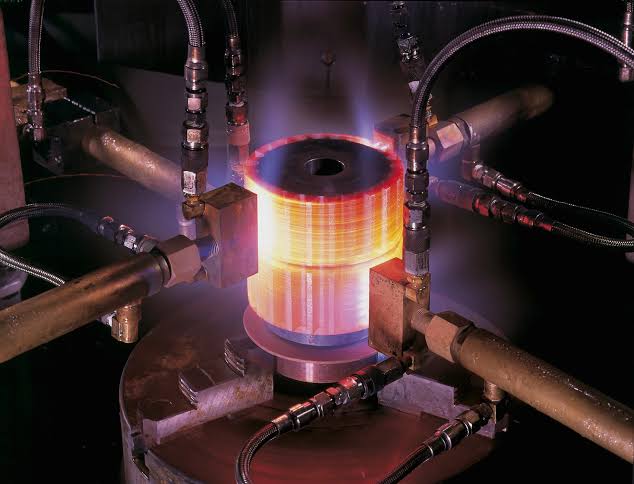
The primary goal of annealing is to make metals more suitable for manufacturing processes such as shaping, forming, stamping, forging, bending, and hydroforming. Stress relief involves heating metal at a relatively low temperature and allowing it to cool uniformly. The recommended temperature is below 1000°F for copper or steel and below 400°F for aluminium.
However, annealing is conducted at significantly higher temperatures—1600°F (870°C) or higher for copper and steel 600°F (315°C) or higher for aluminium. This can provide more stress relief compared to a more straightforward stress relief treatment process. Annealing treatments are applied to all types of metal using a vacuum, endothermic, and air furnaces.
Normalizing
Normalizing is a method that eliminates internal stress in ferrous metals after cold working processes such as rolling, stamping, hammering, etc. Despite this, normalized steels are tougher and stronger than annealed steel. As a result, normalizing is typical for steel parts exposed to impact and requiring maximum toughness and resistance to external stress.
The process of normalizing involves:
- Heating the metal material to a specific temperature between 810 – 930°C, depending on the steel grade
- Ensuring uniform heating by soaking the metal
- Cooling it in still air
It’s essential to note that normalizing in the heat treatment of steel involves higher temperatures than the hardening and annealing processes. The primary aim is to eliminate internal stresses developed after cold working. Normalizing also enhances electrical and mechanical properties, machinability, and tensile strength, restoring the structure to normal conditions.
Carburizing
This process enhances the surface hardness of steel by introducing carbon atoms into its surface and sub-surface. This strengthens the metal part’s surface, improves its microstructure, and enhances mechanical properties through carbon diffusion. The depth of carbon diffusion depends on factors such as the carbon level in the atmosphere, the material type, the temperature, and the duration of exposure to that temperature.
Hardening occurs after quenching the part. Carburizing increases surface hardness and improves fatigue strength and wear resistance. It is most used for steels with low carbon content, ranging from 0.05% to 0.3%. It can be applied to parts with varying complexity. Carburizing is the preferred treatment for metals that require enhanced wear resistance, durability, and fatigue strength for their intended applications at temperatures ranging from 850°C to 1000°C.
Nitriding
Nitriding is a thermochemical case-hardening process that enhances metal parts’ hardness, fatigue life, and wear resistance. Nitriding involves diffusing nitrogen into the metal surface to achieve the desired hardening effect. The process involves heat-treating a ferrous material and exposing it to controlled subcritical temperatures with active nitrogen.
Temperatures ranging from 400°C to 590°C are applied during the exposure to active nitrogen, ensuring they remain below the final tempering temperature to preserve the metal’s mechanical properties. Nitriding is most effective on alloy steel materials containing elements that form nitrides, facilitating the easy formation of alloy nitride precipitates with nitrogen.
In addition to its hardening effect, nitriding imparts anti-seizing, anti-galling, and anti-welding properties to the metal part. Nitrided metals can maintain their hardness in temperatures up to 1000°F. These characteristics make nitrided metals highly suitable for various applications, including dies, bearings, gears, spray nozzles, shafts, feed screws, valves, piston rings, etc.
Cyaniding
In this process, metal undergoes heating in the presence of sodium cyanide. This leads to the deposition of nitrogen and carbon atoms on its surface, increasing hardness. The metal part is immersed in a molten cyanide salt bath maintained at 950 degrees Celsius during cyaniding.
The molten salts used include sodium chloride, sodium carbonate, sodium cyanide, and soda ash. The immersed piece stays in the molten cyanide at 950°C for 15 to 20 minutes. Sodium cyanide decomposition produces carbon and nitrogen from carbon monoxide, diffusing them into the surface and causing it to harden. Subsequently, the part is removed from the bath and quenched in oil or water.
Case Hardening
In the case of the hardening process, the outer layer of the metal part is hardened while the interior remains soft. Metals like steel and iron, which have a low carbon content, require additional carbon infusion onto the surface. Typically used as a final step after machining, case hardening involves high heat and other chemicals and elements to create a hardened outer layer. Since hardening can make metals more brittle, case hardening is beneficial for applications needing a flexible metal with a durable wear layer.
Factors Affecting the Heat Treatment Process

A variety of variables influence the heat treatment of metals. Check the following factors:
Temperature and Time
Time and temperature are essential in metal heat treatment, influencing the heating, soaking, and cooling stages. Research indicates their pivotal role in altering mechanical properties and microstructure, and for example, raising the steel’s cooling rate (quenching) by 1000°C per minute results in a new microstructure (martensite).
Metal Alloy Composition
The heat treatment of metals is also affected by alloying elements. These elements slow down the diffusion of atoms through iron lattices, thereby delaying allotropic transformations.
Additionally, alloying elements like manganese, nickel, molybdenum, and boron contribute to increased hardness. They enable tempering at higher temperatures, resulting in improved flexibility. Consequently, the composition of the metal influences the heat treatment process.
Deformation Rate
In many instances, various heat treatment processes lead to different deformations and alterations in the dimensions of parts. The extent of deformation is connected to the following factors:
- The initial structure of the metal material before heat treatment.
- The specific heat treatment method and its placement in the furnace.
- The distribution of stress.
Consequently, the extent of deformation impacts the heat treatment process of metals.
Conclusion
Applying heat treatment to metals is an effective method for enhancing their mechanical properties. It can also improve the magnetic and electrical characteristics of a metal in addition to its physical properties. Various thermal treatment procedures can be employed for product enhancement, but achieving desired results necessitates the expertise of qualified professionals.
With Zintilon, the production of precisely tailored elements becomes straightforward. Our facilities are equipped to conduct diverse heat processing operations executed by highly skilled technicians and engineers. We are ready to leverage our knowledge and experience to deliver top-notch services. You can be assured of receiving comprehensive assistance and products tailored to your specific needs, all at competitive prices. Get a quote today!
